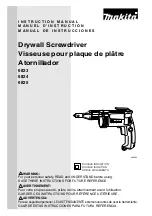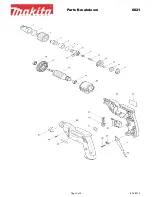
31
|
www.lakeshore.com
2.4.6.2 Sample Isolation for Low Noise Measurements
Even with proper setup and isolation of the electronics, it is sometimes impossible to
reduce their interference with the sample when it is mounted on a grounded sample
holder. One solution is to use an optional coaxial sample holder to isolate the sample
from the grounded sample cooling assembly and vacuum chamber. The FT-BNC
feedthrough and cable configuration can be used to bring a clean measurement
ground reference directly to the sample plane. This configuration can both isolate
and shield the sample (see FIGURE 2-24).
2.4.6.3 Additional Considerations for Low Noise Measurements
When designing a small signal or low noise experiment it is important to consider
more than the electronics. There are environmental factors that can limit
measurement quality as well. Three of the most common are:
1.
Contact quality:
poor probe to sample contacts can cause noise, drift, and poor
repeatability in measurements. Refer to section 2.6 for information on how to
improve contact quality.
2.
Temperature stability:
the sample temperature changes relatively slowly in most
applications and often does not contribute to measurement noise. Small signals
tend to have longer measurement intervals due to averaging so they are more
susceptible to temperature changes. It is important to properly tune the
temperature controller to improve temperature stability. It is also important to
allow the system to stabilize at the desired temperature longer before taking
data. It often takes several minutes after the sample stage temperature sensor
stabilizes before the sample comes to equilibrium.
Cryogenic experiments are most often designed to cool the system to base
temperature first. Temperature is then increased between data points to provide the
best sample temperature stability.
3.
Vibration isolation:
the vibration present in a typical probe station seldom
contributes to measurement noise unless the probe to sample contact is poor.
When making small signal measurements, the effect of vibration increases. The
slight change in contact resistance due to the vibration is larger compared to the
signal. Other noise sources such as the triboelectric effect in the probe cables can
also become meaningful. Lake Shore offers the PS-PLVI option for isolating
vacuum pump lines that have the potential to induce vibration into the
Model CRX-6.5K probe station.
2.4.7 Measuring Low
Resistance
One application that produces small, difficult to measure signals is probing low
resistance samples. It is tempting to simply increase excitation current to increase
the signal voltage above the noise floor. However, in cryogenic systems like the
Model CRX-6.5K, this can lead to unwanted heating of the sample. AC measurement
techniques like those used in lock-in-amplifiers are preferred in cryogenic
applications because they can separate the signal from noise without excessive
current. Lake Shore offers the industry leading Model 370 AC resistance bridge for
this and other low power resistance measurements. For the ultimate low noise
performance, the optional Model 3708 preamplifier for the Model 370 has an input
noise specification of 2 nV/
*
Hz.
















































